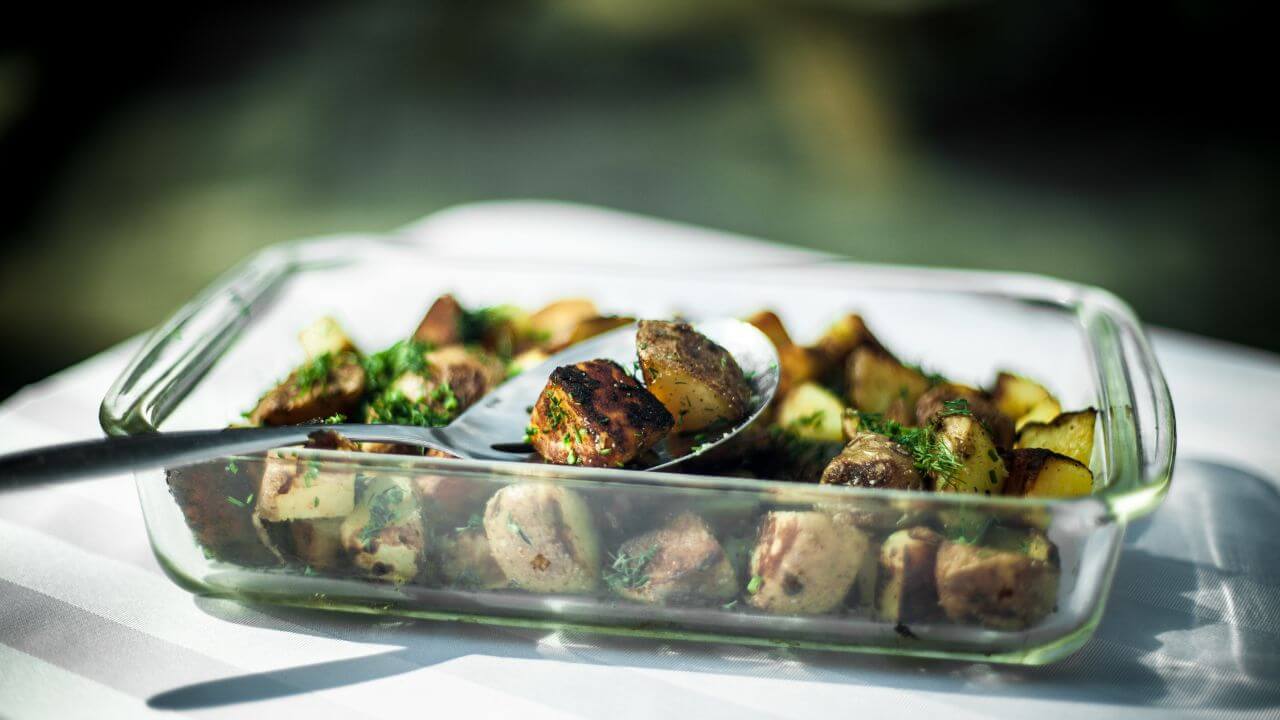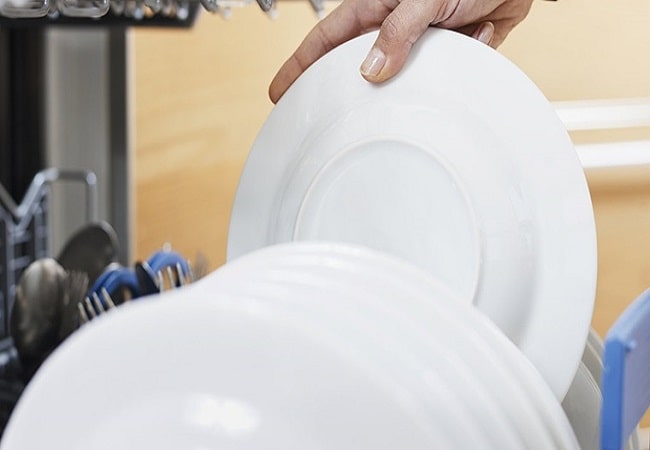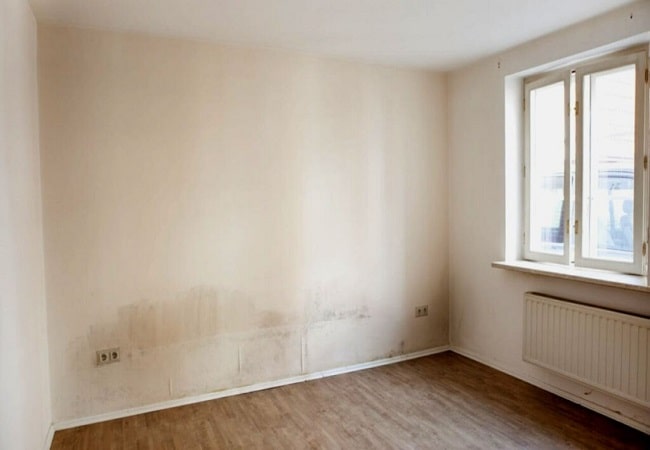Can you put a cold Pyrex dish in the oven? It’s a question that many people have asked. When cooking, you should use the proper dishes and utensils. Pyrex dishes are made of borosilicate glass, which makes them heat resistant. But you should never put a cold Pyrex dish direct in the oven. Doing so can cause the glass to shatter.
However, sometimes you may need to put a cold Pyrex dish in the oven. Can you do this? And if so, how should you go about it? In this post, I’ll answer these questions and provide tips for safely putting a cold Pyrex dish in the oven. Let’s get started!
Contents
- 1 What temp does Pyrex dish break?
- 2 How to Use a Cold Pyrex Dish in the Oven?
- 3 Tips for safely putting a cold pyrex dish in the oven
- 4 What are the Risks of Putting a Cold Pyrex Dish in the Oven?
- 5 Why Did The Pyrex Dish Explode In The Oven?
- 6 What are the pros and Cons of Using Pyrex Dish in the oven?
- 7 Conclusion
What temp does Pyrex dish break?
Pyrex dishes are typically oven-safe to temperatures between 250 degrees Fahrenheit and 450 degrees Fahrenheit. However, because Pyrex is made of glass, it may be susceptible to thermal shock if placed in a cold oven. This means that the dish could break if the oven temperature drops too low, and it is something to keep in mind if you plan on using a Pyrex dish in a cold oven.
How to Use a Cold Pyrex Dish in the Oven?
When using a cold Pyrex dish in the oven, first, you need to bring your cold pyrex dish to room temperature.
Then you need to preheat the oven. Otherwise, your food may not cook evenly.
Additionally, be sure to place the dish on the middle rack of the oven so that it doesn’t get too close to the heat source.
Finally, remember to let the dish cool before handling it; otherwise, you may burn yourself.
Tips for safely putting a cold pyrex dish in the oven
If you don’t do it correctly, baking a cold Pyrex dish can be dangerous. Here are a few tips to make sure you are doing it safely:
- Always use caution when handling hot food or dishes, especially when placing them in the oven. Hot ovens can cause sharp edges on dishes that could cause injuries.
- Ensure the dish you are using is properly cooled before placing it in the oven. Pyrex dishes can take a while to cool off sufficiently, so be patient and wait until it’s noticeably cooler before putting them in the oven.
- Be especially careful when transferring hot food from a stovetop or cooktop to an oven – always use pot holders and avoid touching any surfaces with your hands until the food has been transferred to the dish or container you are using.
- When reheating leftovers, always use caution not to overheat them and risk breaking them down and creating hazardous fumes or soup ladling onto kitchen surfaces where they can easily combust into a dangerous fire hazard.
- Clean up any spills immediately – Pyrex is highly absorbent and quickly soaks up spilled liquids, making cleanup difficult, if not impossible, if not done quickly enough!
- Avoid putting Pyrex into the dishwasher – this will damage the dish itself and any non-stick coating on it. Hand washes it with hot, soapy water and a soft cloth.
What are the Risks of Putting a Cold Pyrex Dish in the Oven?
One potential risk associated with heating Pyrex in the oven is the possibility of fire. Heating Pyrex at high temperatures can cause it to break down and release toxic fumes, which could be dangerous if inhaled.
Also, because Pyrex is made of glass, it can easily shatter if a sharp object strikes it. If you are unsure whether you can heat your Pyrex dish in the oven, err on caution and avoid using it.
Why Did The Pyrex Dish Explode In The Oven?
There are many reasons why Pyrex dishes have been known to explode in the oven.
One reason is that the dishes are made of borosilicate glass, a type of glass that is highly resistant to heat. However, borosilicate glass can weaken over time, and if it is heated too quickly, it can break.
Another reason why Pyrex dishes may explode is that they are not always properly sealed. If there is a crack or chip in the dish, air can get into it and cause it to expand and break.
Finally, Pyrex dishes may also explode if they are heated unevenly. If the bottom of the dish is heated more than the top, the pressure can build up and cause the dish to explode.
What are the pros and Cons of Using Pyrex Dish in the oven?
Pros:
When it comes to cooking, there are countless options for bakeware. However, the Pyrex dish is one of the most popular and versatile choices. Here are some of the pros of using Pyrex dish in the oven:
- Pyrex dish is made from tempered glass, which can withstand high temperatures. This makes it ideal for use in the oven, as it won’t warp or crack under the heat.
- Pyrex dish is also non-porous, so it doesn’t absorb flavors or odors from food. This means your food will taste exactly as it should – unlike whatever was cooked in the dish before!
- Pyrex dish is also very easy to clean – just pop it in the dishwasher, and you’re done! No scrubbing is required.
Cons:
While the Pyrex dish is marketed as being oven-safe, there are some cons to using this type of dish in the oven.
- First, if the dish is heated too quickly, it can cause the glass to crack or shatter.
- Additionally, suppose the dish is not properly cared for. In that case, it can develop scratches and chips over time, making it more likely to break.
- Finally, Pyrex dishes are not always as durable as other types of bakeware. They may need to be replaced more often.
Conclusion
In conclusion, putting a cold Pyrex dish in the oven is safe. However, preheating the oven before placing the dish inside is best. Finally, always use caution when handling hot or boiling liquids, and never put them in the oven.





Leave a Reply